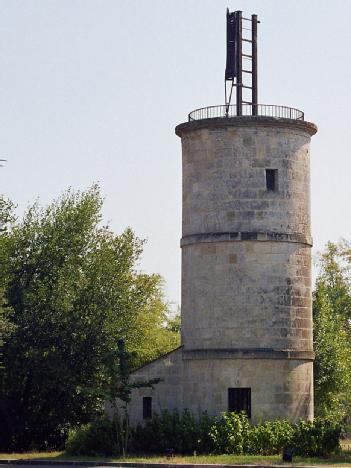
Tour Chappe de Laburthe |
33170 Gradignan, France (Nouvelle-Aquitaine) |
|
| Address |
25 Cr du Général de Gaulle,
|
| Floor area | unfortunately not known yet |
|
Opening times
|
It can be visited every year during the Heritage Days.
Elle peut être visitée tous les ans lors des journées du patrimoine.
|
|
Status from 04/2023
|
We don't know the fees. |
| Contact | Unknown contact data for this museum - please help via contact form. |
| Homepage | |
| Location / Directions |
|
| Description | Wikipedia: There is also an example of a hand-held telegraph tower, known as the Chappe telegraph, in the grounds of the National Institute for Young Deaf People (INJS). 10.70 m high, the tower was built in 1823 on the occasion of the War of the Spanish Succession. Louis XVIII, who had raised an army of 100,000 men to help Ferdinand VII, wanted quick news of the conflict and troop movements. He therefore used the optical telegraph invented by Abbé Chappe (1763-1805) and had 110 relay stations built between Paris and Bayonne. The principle, which was identical in all the stations, was based on an articulated mechanism. At the top of a beam was fixed a relatively long arm that could swivel (the regulator), itself equipped at each end with two shorter arms that could also swivel (the indicators). A system of ropes was used to move the whole thing and create different geometrical figures. Underneath the mechanism, in a working room, the stationary operator observed the neighbouring tower, 10 to 25 km away, with a telescope, relayed the messages observed by operating the mechanism and recorded the signals transmitted in a register. The written message was coded by the director at the beginning of the line. For this he used a telegraphic code book. The figures worked in pairs, the first referring to the page number and the second to the line number. This way, the stationaries could not know the content of the message being transmitted. This system made it possible to transmit a message in three and a half hours, whereas it would have taken five to six days with post horses. The only drawbacks were that night and bad weather made transmission impossible. |
[dsp_museum_detail.cfm]
| Data Compliance | More Information |
